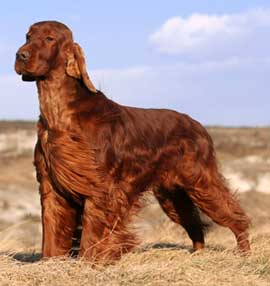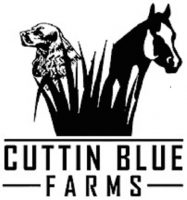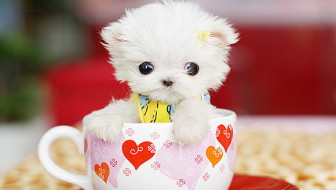 Irish Setters are social animals with children, other dogs and pets though sometimes may be a problem with small animals. They are excellent companion animals and family pets though can be a little vigorous with children and may need supervision.
Irish Setters are social animals with children, other dogs and pets though sometimes may be a problem with small animals. They are excellent companion animals and family pets though can be a little vigorous with children and may need supervision.
They do not make the best guard dogs as they are not an assertive breed but they are aware and alert to their surroundings. They are used often as therapy dogs in schools and hospitals.
Training of Irish Setters is often described as trying as they quickly get bored or easily distracted, despite their obvious intelligence. Training needs to start early in life but remember that the dog is usually not mentally mature until they reach the age of two. Also remember that over-exercise can bring on health problems in later life.
These dogs respond to tone of voice and will pay no attention if they sense they are stronger-willed than their owner. A calm, natural authority is needed when giving clear rules which must be adhered to.
Basic Training
Early training can be not allowing the dog to jump onto humans and to heel on a lead. Training can begin as early as 8-9 weeks for a few minutes at a time with play breaks between and treats or toys as rewards.
It is important to be the most interesting thing around the puppy to hold its attention and make it want to learn. It is also important to show your emotions to the dog so it can understand, so reward good behavior with outward signs of happiness at this. But on the turn side, if the dog behaves badly, remain calm but alter voice and tone to show displeasure.
It is also important to allow young dogs some time away from the lead when walking so he can investigate the world around him. It is advisable to allow him to check out his surroundings without calling for him and let him return to you naturally. Again, emphasise how pleased you are when he does this.
By the age of 7 months, there may come a time when the dog runs off the check out the world and refuses to come back. Keep calling his name and walk in the opposite direct to which he is, which often prompts the dog to chase after. Keep patience and he will come back.
House Training
House training should start straight away and follow similar principles to basic training. Regular trips outside after regular meal times will help the dog to understand what is required and praise when completed reinforces this.
It is important to take notice of any signs the puppy gives to you, for example whining at the door or walking in circles. This may mean he needs to go outside and he should be praised for realising this after the job is done.





